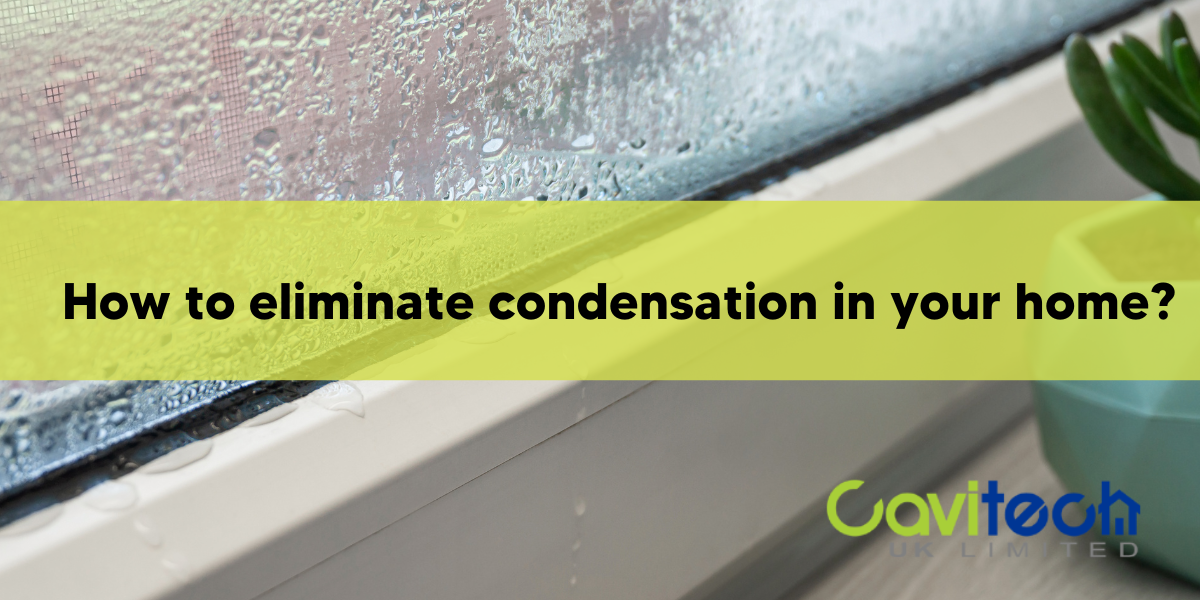 Condensation is a common problem in numerous homes, particularly in homes with a high number of occupants compared to the size of the property. If it is not addressed properly, even slight condensation can result in a range of problems, such as mould development, harm to decoration and belongings, and health risks.
Condensation is a common problem in numerous homes, particularly in homes with a high number of occupants compared to the size of the property. If it is not addressed properly, even slight condensation can result in a range of problems, such as mould development, harm to decoration and belongings, and health risks.
What is Condensation?
When warm and wet air comes into contact with a cold surface, the moisture in the air cools and condenses to form water droplets. This occurs naturally, but is frequently observed on windows, walls, and other surfaces in homes, particularly in kitchens, baths, and bedrooms.
Identifying Condensation Problems
It is important to determine the location and cause of condensation in your home before making any decisions. Be alert for these common signs:
● Water Droplets: Particularly in the morning, water droplets on windows are an obvious indicator of high levels of humidity in the surrounding air. As time passes, mould can start growing around window frames and sills, leading to both aesthetic and health issues, especially for those with respiratory illnesses.
● Damp Patches: If left untreated, damp areas on walls can grow mould. They are often observed in room corners, behind furniture, or in areas with poor ventilation. These areas can also be the perfect breeding grounds for mould, leading to potential harm to buildings and its residents.
● Peeling Wallpaper or Paint: Moisture can lead to wallpaper and paint peeling, bubbling, or blistering. These signs frequently suggest more serious moisture-related problems within your household.
How to Eliminate Condensation?
1. Improve Ventilation
Improving ventilation is one of the most effective methods for combating condensation. Keep windows open to let fresh air and wet air out of your home. Just a couple of minutes can have a significant impact. Install extractor fans in bathrooms and kitchens to remove extra moisture right where it originates.
2. Reduce Moisture Production
When cooking, lower steam by either using a vent fan or opening a window. Hang clothes outdoors or in a room with good air circulation when you can. Do not use radiators to dry clothes because it adds excess moisture to the air. Make sure to cover pots with lids while cooking in order to trap the steam.
3. Increase Heating
Increased heating and a consistent temperature can help decrease condensation. Low, continuous temperature is better than short bursts of strong heat. Insulating your home can help keep the walls warmer and reduce the likelihood of condensation. Consider insulation for your lofts, walls, and floors. Upgrading to double-glazed windows can significantly reduce condensation on glass surfaces but these will reduce airflow so be mindful of that.
4. Use a Dehumidifier
Utilising a dehumidifier is a useful way to decrease humidity in the air. Portable dehumidifiers can be transferred between different rooms and are efficient in eliminating humidity. Inexpensive moisture absorbers can be placed in areas prone to dampness, like wardrobes, basements, or under sinks.
Long-Term Solutions
If you are regularly dealing with condensation difficulties, you may want to consider making more serious changes.
● Install an MVHR System: MVHRs, known as mechanical ventilation with heat recovery, provide a solution with longer-lasting effects. They keep heat while providing reliable airflow, especially beneficial in new homes or extensive renovations.
● Improve Home Insulation: Ensuring the proper insulation of your home can make a significant difference. Consider consulting with experts in order to select the best insulation options for your house.
Condensation might seem minor, but addressing it promptly is crucial for maintaining a healthy and comfortable home.
